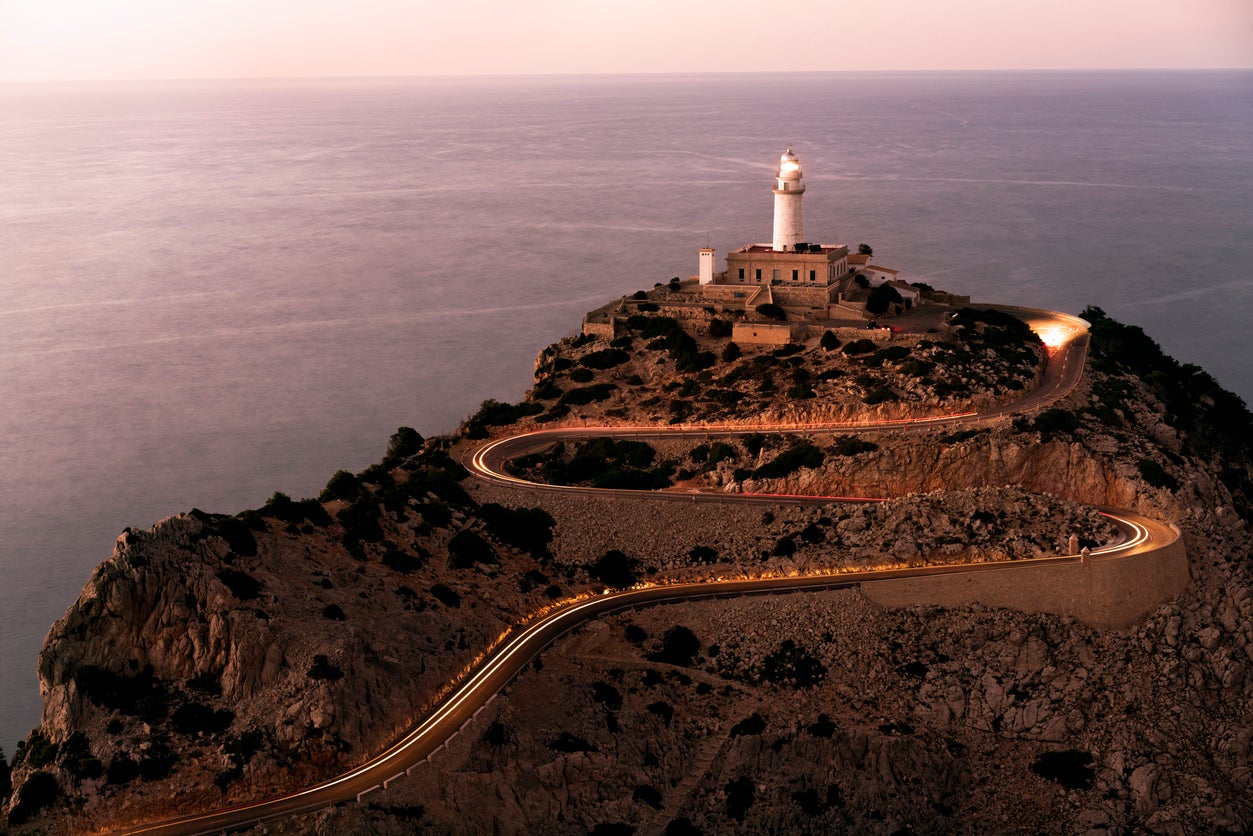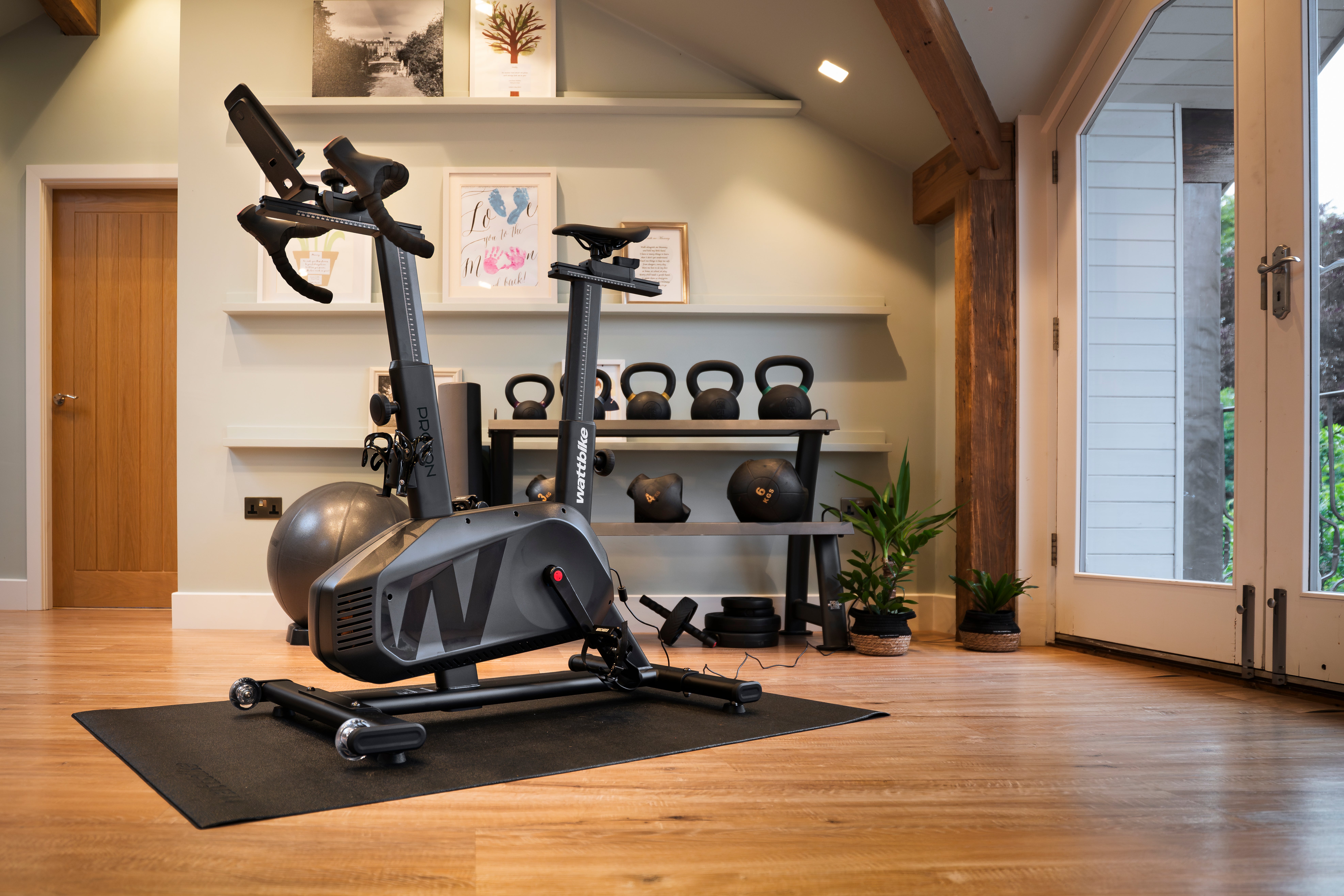It begins with a lie. The road to Sa Calobra – Mallorca’s most iconic climb – starts at the top. To ride it, you first descend 700 metres through a ribbon of hairpins carved into the Tramuntana mountains. Then you turn around and ride back up. There’s no alternative. No cut-through or escape. It’s an out-and-back that demands intent.
I was travelling with a group of cycling mates more used to dodging potholes in Kent and Surrey than navigating switchbacks in the Balearics. From the moment we landed, it was a bit of a whirlwind – straight to the hire shop, quick bike fits, and barely time for a coffee before we were on the road.
The hire bikes – £10,000 carbon frames with Di2 electronic shifting – made our usual steeds look a little paltry by comparison.
Sa Calobra is, in cycling folklore, both pilgrimage and proving ground. I had arrived in Mallorca off the back of a winter spent in a London flat, logged into Zwift and the Wattbike Hub app, enduring FTP tests in the company of drying laundry. There’s nothing romantic about indoor training, but it works. The numbers, I kept telling myself, don’t lie.
The bike I used was the Wattbike Proton – a newer, more accessible sibling to the AtomX, designed for riders who want to train seriously without committing the GDP of a small country. At £1,795 it’s still a considered investment, but there are few smart bikes at this price point that offer as much. It arrives mostly pre-assembled and adjusts quickly without the need for tools. You can fine-tune crank length, bar height and saddle position in a matter of seconds. It supports anyone from 4ft 6in to 6ft 6in. And crucially, it integrates seamlessly with training apps like Zwift, Rouvy, and its own subscription-free Hub.
All that matters in February, when motivation is scarce. I found the Proton to be responsive and consistent. It doesn’t coast or fudge resistance like some cheaper bikes. If you hit a hill on Zwift, you feel it instantly. Power numbers are impressively stable. The inertia is smooth. More than once, I forgot I was riding indoors. There’s a bit of grain in the way the resistance kicks in when riding in erg mode, and the gear-shift buttons take a bit of getting used to. It can be a touch noisy too – the kind of low mechanical hum you notice more in a quiet room than mid-effort – though placing the bike on a decent mat helps dampen it. Still, these are minor complaints. It’s solidly built, compact for what it offers, and easy to move around if needed.
By the time I arrived in Mallorca in early June, I was quietly optimistic. I felt lighter. Sharper. The Proton hadn’t just maintained fitness, it had moved things forward. I could sit at threshold for longer, recover quicker, and hold a steadier line at pace. These are marginal gains, but they’re the things that make a ride feel different. Better. More in control.

Cap de Formentor was my first test. A 70km roundtrip to a lighthouse at the island’s northern tip, it’s not a climb in the strictest sense – more a rolling series of undulations through pine forests and cliffside roads. But the scenery is postcard-perfect: turquoise sea, sun-bleached stone, switchbacks that dip and swoop like a rollercoaster.
At one point, descending into a bowl of shimmering heat, I looked down and saw 69km/h on the screen. It felt fast, but not reckless. The legs held up. I climbed well on the return, holding a steady tempo as the road kicked up in steps. At the top, the Strava file confirmed what I’d hoped: my best effort on that road by some margin.
There is a quiet satisfaction to training working. Not because it makes the ride easier, necessarily, but because it allows you to enjoy the effort more. On the Wattbike Proton, I’d ridden simulated versions of these gradients again and again. Here, in the heat and beauty of Mallorca, the movements were familiar. The rhythm came back instantly.
Day two was Sa Calobra. Part of the difficulty is that you don’t simply roll up to the base of the climb fresh. There’s a 55km ride to get there first, much of it uphill, winding through the Tramuntana range. By the time you reach the start – legs already tested – you still have to navigate the hair-raising descent before the real work begins. At the bottom, I paused briefly, clipped back in, and started the climb. It’s 9.5km long with an average gradient just over 7 per cent. At points it pulls up savagely into double digits – 10, 11, even 12 per cent in places. It doesn’t flatten. It just winds and rises.

The first five minutes are always hard. You’re finding your gear, your breath, your resolve. But then the pace settles and you start ticking off the hairpins. I kept cadence high and effort just below threshold, in that space the Hub app calls ‘sustainable suffering’. At the bridge halfway up I checked my time. I was on course for a PB. And I held it. Not by much, but enough to prove to myself the winter hadn’t been in vain. My final ascent time was nearly five minutes quicker than my last effort on the climb – and it felt smoother throughout.
The third day was a recovery spin, a loop inland to Pollensa and back through almond groves and sleepy villages. The air was warm, the traffic light. It was the kind of ride that doesn’t need a number. You just pedal and look around.
It’s easy to overlook what gets you to this point. The Proton sits in the corner now, next to the fan, quiet and slightly dusty. But I’m an indoor bike convert now. Structured training is addictive in a subtle way. It builds momentum. And the Wattbike has become part of that. Reliable, accurate, unflashy. A piece of kit that does what it claims.
For those looking to make indoor training tolerable – even enjoyable – the Proton is hard to beat. It doesn’t try to be everything. It just works. And when you find yourself climbing Sa Calobra under a Mediterranean sun, it all starts to feel worthwhile.
In total, the three rides clocked just under 275km, with more than 4,000 metres of climbing. One day topped 100km alone. Nothing heroic, but enough to feel like you’ve earned your supper. Enough to test what winter built. Mallorca remains a paradise for cyclists. But paradise still has hills. And I was glad to be ready for them.


